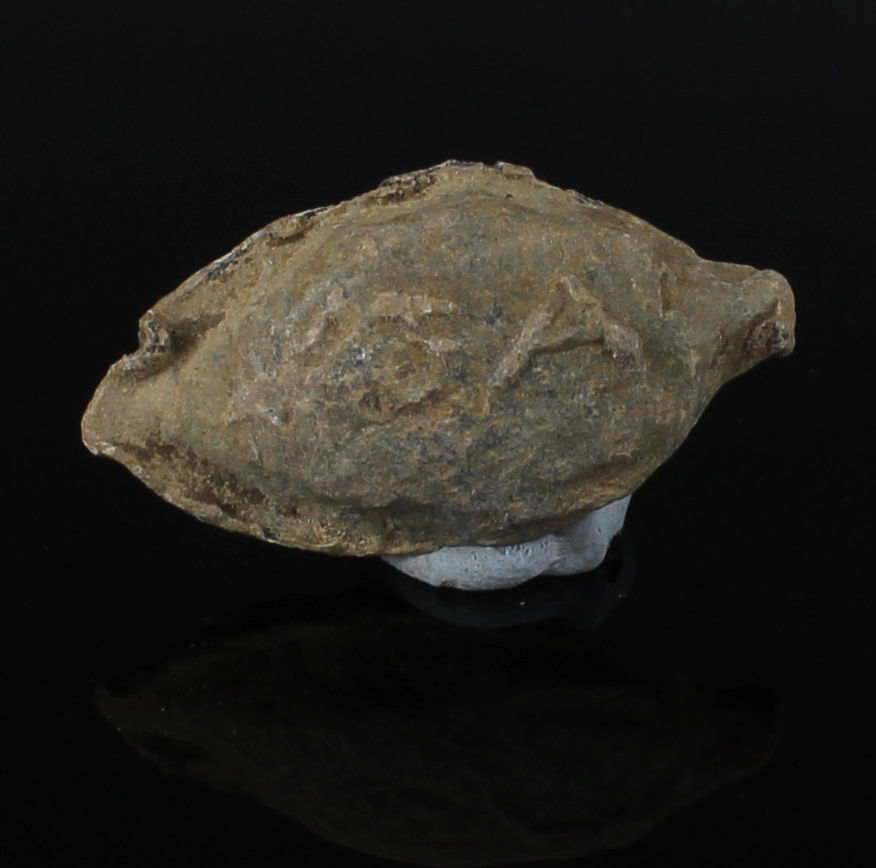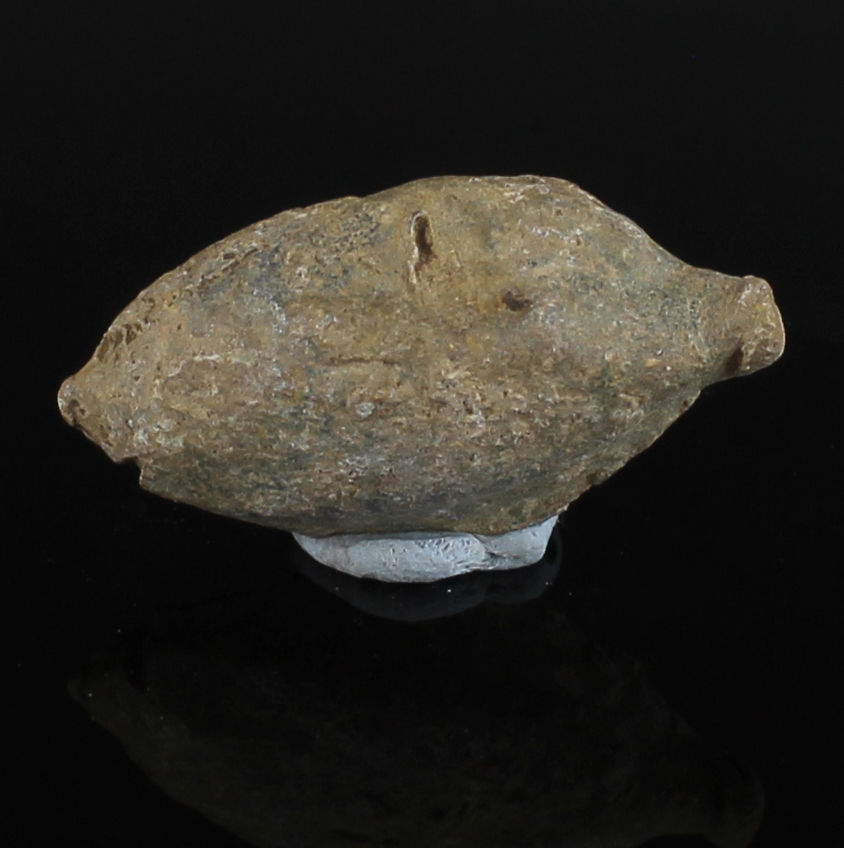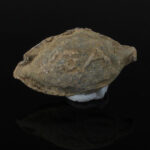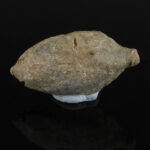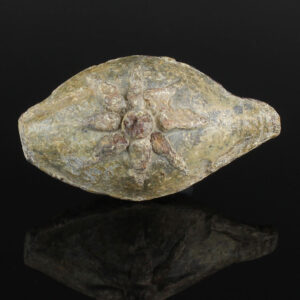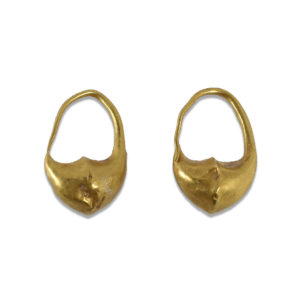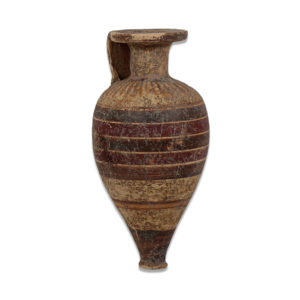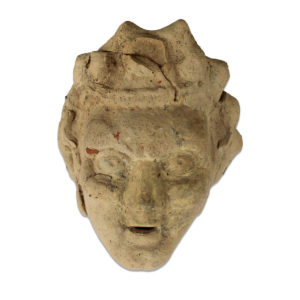Description
| ITEM | Sling bullet with inscription ‘AXA(?) / blank?’ |
| MATERIAL | Lead |
| CULTURE | Greek |
| PERIOD | 4th Century B.C |
| DIMENSIONS | 15 mm x 31 mm |
| CONDITION | Good condition |
| PROVENANCE | Ex English private collection, acquired before 1990s |
Greek sling bullets, also known as “glandes” (singular: glans), were small, often egg-shaped projectiles used with slings by ancient Greek soldiers. These bullets were typically made of lead, although stone and clay examples have also been found. Lead was preferred due to its density, which allowed the bullets to travel farther and with more force than those made from lighter materials. The use of slings and sling bullets dates back to ancient times, but they became particularly significant in Greek warfare from the 5th century BCE onwards, used by specialized troops known as slingers or “sphendonetes.”/p>
The design of Greek sling bullets was often quite sophisticated, with many bullets bearing inscriptions or symbols. Inscriptions could include the names of the city-state or military unit, the names of commanders, or messages intended to demoralize the enemy, such as “take that” or “catch this.” Some bullets were even crafted in the shape of acorns or almonds to enhance their aerodynamic properties. The addition of such inscriptions and designs not only served practical purposes in identifying and intimidating foes but also provided a psychological edge in battle, showcasing the ingenuity and resourcefulness of Greek soldiers./p>
Sling bullets played a crucial role in various military engagements throughout Greek history, particularly in skirmishes and sieges where ranged attacks were advantageous. The effectiveness of slings was notable in their ability to strike enemies at a distance, penetrate armor, and cause significant injuries or fatalities. Slingers were valued members of Greek armies and often operated alongside archers and infantry, contributing to the tactical flexibility and overall combat effectiveness of Greek forces.


